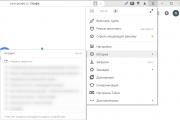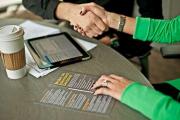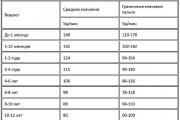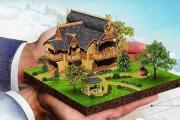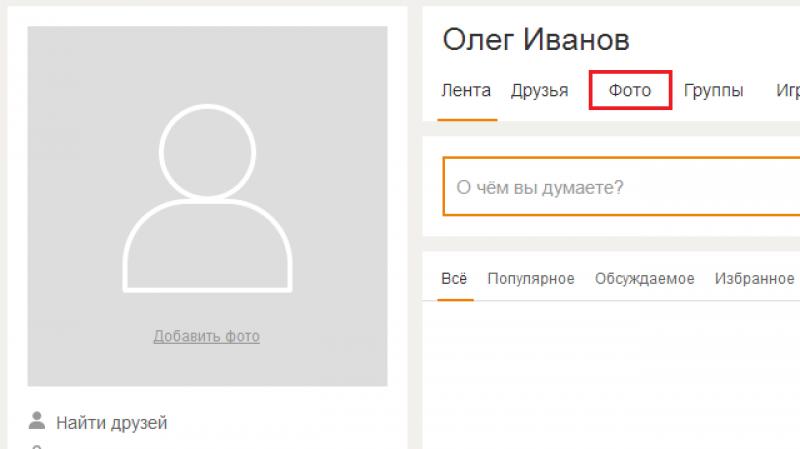Low heart rate: what to do at home?
The pulse helps to estimate the heart rate. The rate of beats per minute is 65-95. If the indicators are lower, we are talking about pathologies of the heart, brain, lungs, kidneys or liver. Why does a low pulse (bradycardia) occur, its normalization with the help of exercises, folk recipes and medicines from the first aid kit.
A low pulse may indicate pathologies of the internal organs.
Causes of a low heart rate
Even in a healthy person, bradycardia is noted. This happens at night or in the morning, when the body is just rebuilding from sleep to wakefulness. This is not a pathology. A slight drop in heart rate in athletes is also considered normal. The heart, accustomed to excessive stress, slows down its contractions in a state of rest.
For humans, a congenital slow heart rate is not dangerous. This is an individual feature of the body.
With a decrease in heart rate - no treatment is required. The pulse in such situations is restored on its own.
Significantly affect the decrease in heart rate:
- Atherosclerosis. Due to blockage of large vessels, blood circulation slows down.
- Endocarditis. The development of inflammatory processes inside the shell of the heart.
- Hypotension. As a result of lowering blood pressure, there is an insufficient pressure on the vascular walls.
- Myocarditis. Inflammation of the heart muscle.
- Myocardial infarction. There is an irreversible cessation of cell viability in the heart muscle, coronary blood flow stops due to injury to the venous arteries.
External factors that provoke a low heart rate:
- abuse of heart drugs;
- poisoning the body with nicotine or lead;
- debilitating diets;
- hypothermia;
- infectious diseases;
- change of weather conditions;
- emotional stress.

Strong emotions can affect your heart rate
Weak heartbeats are possible during pregnancy. This usually happens in the later stages as a result of fetal pressure on the genital vein. To exclude possible heart pathologies, it is important for a pregnant woman to consult a doctor.
With age, the heart rate increases. In an elderly person, 70-100 beats per minute is considered the norm. Therefore, even a slight decrease in heart rate can provoke a deterioration in the condition (dizziness, impaired coordination, blurred vision, migraine).
Despite the general indicators of a normal pulse, it all depends on the individual characteristics of the human body, its lifestyle. If during bradycardia there is no heaviness or pain from the heart, there is no lethargy, drowsiness and other discomfort in the general condition, then a low pulse is not harmful to health.
Does the pulse depend on pressure?
Heart rate variability in normal, low and high blood pressure are closely related.
With normal pressure (from 110 to 70 to 130 to 80), the number of heartbeats should not exceed 60-90 beats in 60 seconds.
The following factors can provoke such a decrease:
- taking medications that affect the heart muscle;
- nervous strain;
- unusual for the body heavy physical activity.
But high blood pressure and a slow heart rate should alert.
The reasons for the combination of these indicators can be:
- cardiosclerosis;
- inflammation of the outer lining of the heart;
- ischemia;
- oncology (in rare cases).
If, with hypertension and a small pulse, lethargy, nausea, and pain in the heart are observed, it is important to immediately call an ambulance. Bradycardia with hypotension is a sign of negative processes in the body. The cause of a slow heartbeat is often diseases of the nervous or endocrine system, the development of respiratory arrhythmia in children, meningitis.
Before the doctor arrives, it is dangerous to make a choice of medicines on your own, as serious complications can be provoked.
How to increase your heart rate without increasing your blood pressure
It happens that the pulse rate slows down, but the pressure remains normal. There are effective ways that make it possible to quickly restore a normal heart rhythm and not affect blood pressure.
- Use mustard plaster. On the right side of the chest, you need to attach a mustard plaster. Its action will stimulate the heart muscle and speed up blood circulation, but it will not affect blood pressure.
- Massage. It is necessary to massage the earlobes for 1-2 minutes. Then make extensor and flexion movements with the left hand, then stroke the hand for 3-5 minutes. Such a massage helps with painful sensations in the heart.
- Drink the medicine that was previously prescribed by the doctor. If a person has a decrease in heart rate for the first time and the doctor did not prescribe anything before, then self-administration of drugs is prohibited. This can be detrimental to health.

Massage of the earlobes will help increase the pulse
These methods will help to temporarily alleviate the condition of a person. After normalizing the pulse, it is important to go to the hospital and undergo an examination to identify the cause of the slow heartbeat.
What to do at home?
If a person complains of feeling unwell (nausea, weakness, dizziness, coldness in the arms and legs, goosebumps and darkening in the eyes with a sharp rise), the first thing to do is to determine the pulse rate and measure the pressure.
First aid
To quickly normalize the rhythm and improve well-being, you need to do the following:
- drink hot coffee or green sweet tea, you can add cinnamon or cloves - spices help increase the pulse;
- among drugs, it is preferable to use drugs based on radiola, echinacea;
- take deep breaths for a minute;
- take a contrast shower, if you feel well.

Hot coffee quickly raises the pulse
It is important to remember that all of these methods are relevant if there is no predisposition to high blood pressure. Otherwise, there is a risk of significantly increasing the pulse and pressure, which threatens with complications.
Medicines and preparations
In case of bradycardia and high blood pressure, Corvalol, Zelenin drops will help stabilize the condition (you need to drink 15 drops at once). When taking such a remedy, it is important to strictly follow the instructions.
If we are talking about a slow heart rate and low blood pressure, then taking any medication should be done with great care. Cordiamin drops will help to raise the pulse, which you need to drink at the first symptoms of malaise.

Cordiamin drops are used to raise the pulse rate
Eufillin, Atenolol, Atropine are considered effective drugs for low heart rate, but such drugs should not be taken without a doctor's prescription, so as not to aggravate the patient's condition.
What foods to eat with a low heart rate
With bradycardia, a strict diet is not required, but it is worth reviewing the diet:
- Eat more vegetables, herbs, fruits. Focus on carrots, parsley, onions, cabbage, citrus fruits, bananas, apples.
- Lean meats and steamed foods are welcome.
- Introduce fermented milk products and milk porridge into regular use.
- Drink more liquid. The daily dose should be at least 1.5-2 liters.
- Eat more seafood.

Vegetables are good for the body
It is important to limit the consumption of spicy, salty, smoked, fatty and fried foods as much as possible. Flour and sweet dishes are also eaten as little as possible. Avoid drinking alcohol and smoking cigarettes.
Proper nutrition will help normalize the functioning of the heart muscle and improve the condition of the body as a whole.Low heart rate exercises
To raise the pulse, the values of which have fallen to 50-55 beats per minute, you can do a little jog. If such a procedure is not possible, there are several exercises to normalize the heart rhythm.
- To begin with, you need to raise your hands up, after 3-5 seconds quickly lower them down.
- Lie down on the floor and depict “scissors” or “bicycle” with your feet. Such movements must be done 15 times in both directions.
- In a lying position, bend your knees, clasping them with your hands at chest level. Close your hands tightly, trying to open them with your knees.
- Head tilts to the sides (left and right). After such a manipulation, it is recommended to sit down calmly and work with your left hand (squeeze-unclench) for 1-2 minutes.

To raise the pulse, you can do simple exercises
Treatment with folk remedies
A decrease in heart rate does not always provoke people to see a doctor. To alleviate the condition at home, you can use folk remedies. Among them there are those that do not affect the pressure.
Therapeutic mixture of walnuts
Mix half a kilogram of chopped nuts with sesame oil (250 ml). Grind 4 lemons, pour 1 liter of hot water over them. Mix the prepared components, add 20 g of powdered sugar. The resulting mixture is taken in the morning, afternoon and evening, 1 tbsp. l., without exceeding the dose.

Walnuts can help boost your heart rate
Rosehip decoction
Boil rosehips (50 g) in 0.5 liters of water for at least 10 minutes. After cooling, pass the berries through a colander, place the resulting slurry in a decoction, mix with honey (3 tsp). This remedy is recommended to be taken 20 minutes before meals every day.
Rosehip will help normalize the pulse and reduce high blood pressure.

Rosehip lowers high blood pressure well
Pour 150-200 g of pine shoots with 320 ml of alcohol, insist in a bright place for 7-10 days. Tincture take 15-20 drops during periods of a sharp decrease in heart rate.

Pine bud tincture perfectly normalizes the pulse
Folk remedies need to be taken with caution so as not to overdo it with an increase in performance. Before starting treatment, it is better to consult a doctor.
A slight decrease in heart rate does not always indicate a pathology and requires treatment. It is necessary to closely monitor the signals of the body. If there is a significant deterioration in well-being during bradycardia, you should consult a doctor and do not self-medicate. There are many reasons for a rare pulse, and the doctor will help to establish and eliminate them.


